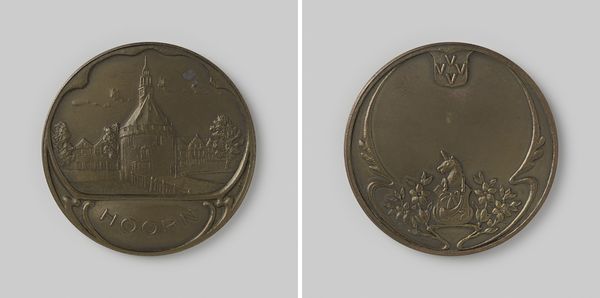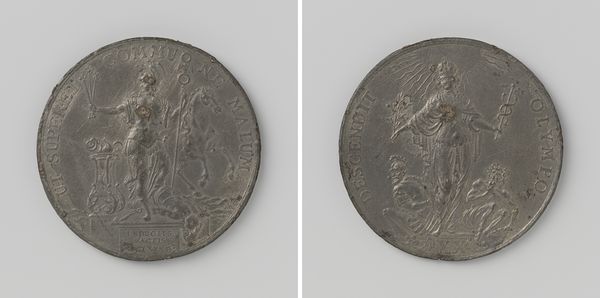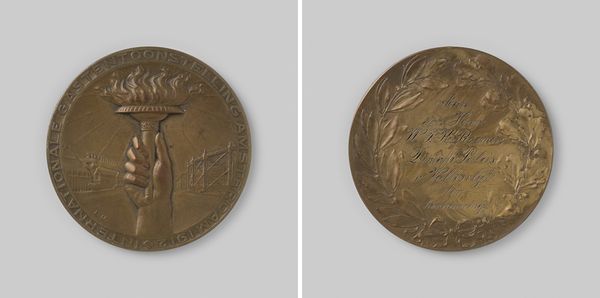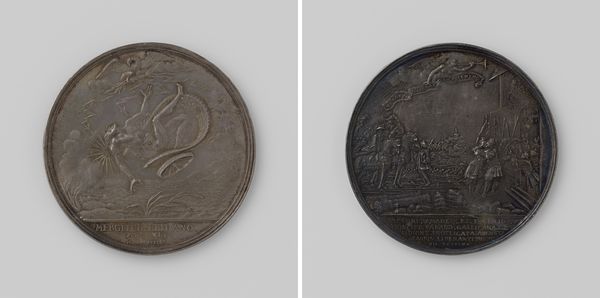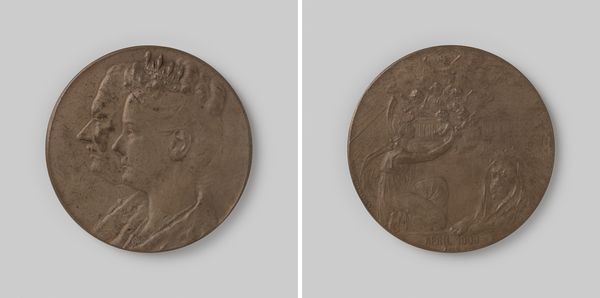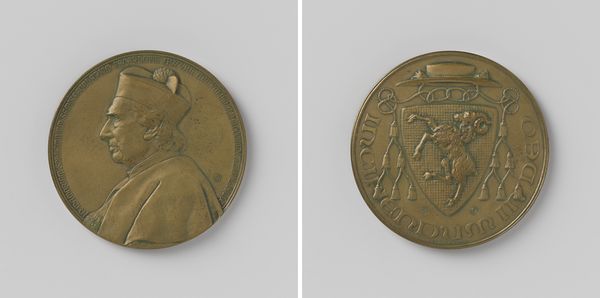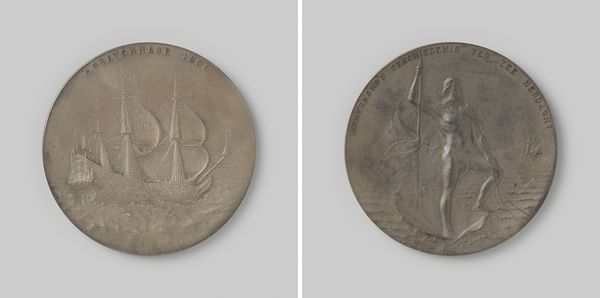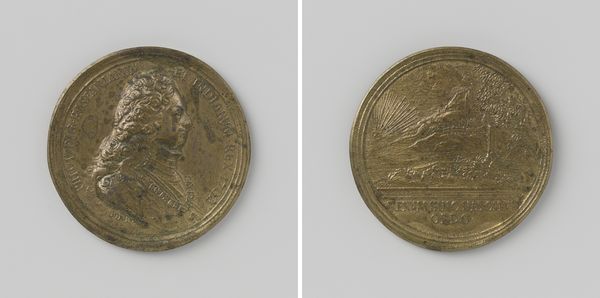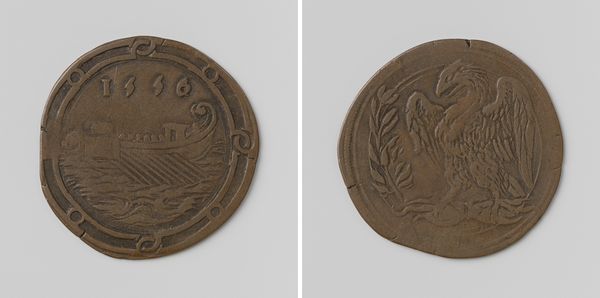
Boerenoorlog, penning geslagen ter ere van degenen die hun leven gaven voor koning en vaderland 1902
0:00
0:00
relief, bronze, sculpture
#
medal
#
sculpture
#
relief
#
bronze
#
sculpture
#
symbolism
#
history-painting
Dimensions: diameter 7 cm, weight 128.83 gr
Copyright: Rijks Museum: Open Domain
Curator: So, this is "Boerenoorlog, penning geslagen ter ere van degenen die hun leven gaven voor koning en vaderland," a bronze relief medal by Emil Fuchs, created in 1902. It depicts scenes from the Boer War. What strikes you most about this piece? Editor: Well, it’s a medal, so it's small, but it still feels... weighty. The subject matter seems serious, especially the image on what I presume is the reverse of the medal, which looks mournful. I’m curious, what’s your take on why it was made? Curator: Given its historical context, we need to acknowledge the complexities and injustices inherent in colonial wars. This medal, while ostensibly honoring those who died for their King and country, functions as propaganda, glorifying a conflict rooted in imperial expansion and the suppression of the Boer people. What message do you think the artist intended to convey, and what message might we interpret today? Editor: I guess I see how easily these kinds of objects can become tools of nationalist narratives. Was this common at the time, to produce commemorative art like this that's...basically promoting a certain viewpoint on history? Curator: Absolutely. Medals, monuments, and history paintings often served to reinforce dominant ideologies. In this case, it reinforces the righteousness of the British Empire and diminishes the experiences and perspectives of the colonized. Considering Fuchs was working in a historical tradition that largely overlooked marginalized voices, what responsibility do we have, as viewers today, when interpreting such a piece? Editor: It sounds like a challenge to unpack what’s actually going on, beyond the surface level glorification of war. I mean, it's powerful imagery, but… tainted by the politics. Curator: Exactly! By critically engaging with the medal's symbolism and historical context, we can uncover uncomfortable truths about power, representation, and the legacies of colonialism that still resonate today. Is there anything else you would like to examine? Editor: Thinking about the purpose of commemorative objects this way… it really changes how I look at them. Thanks for shedding light on that! Curator: My pleasure! Remember, art can be both beautiful and problematic; engaging critically allows us to learn from the past.
Comments
No comments
Be the first to comment and join the conversation on the ultimate creative platform.
